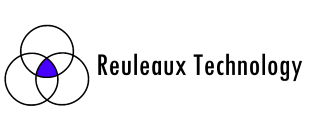“The world is my ear.” A Shakespearean view of the IoT
William Shakespeare, via Pistol in The Merry Wives of Windsor, coined the phrase “The world is my oyster.” The metaphor, less the use of sword and threat of violence, is commonly taken today to mean “The world is yours to pursue and in which to succeed.”
I thought of Shakespeare’s proverb when reading an article in WSJ about Salesforce.com’s new IoT cloud platform the other day. Adam Bosworth, one of the Salesforce development team leaders, is quoted as saying “It’s [Salesforce.com’s IoT Cloud] like a giant ear.” “A giant ear that hears a lot of noise,” I thought.
But then I read an article on how physicists are looking to use my favorite cat, Schrodinger’s Cat, to make a new kind of biochemical sensor. I love Schrodinger’s paradox and after reading the article immediately saw the how the physicists were trying to make use of the quantum physics phenomenon to sense biological or chemical states in a new way that might be reversible and non-destructive – one of the holy grails of IoT sensing. If Bosworth’s ear were joined by a nose or a tongue to smell or taste the world, not just listen to it, that would really create opportunity for those of us working in the IoT.
The parallels between Shakespeare’s oyster and Bosworth’s ear are remarkable. The IoT is a system of systems that always starts with sensors. Sensors produce data, the oysters in Shakespeare’s metaphor. Pistol has to open a lot of oysters to find his fortune, but he has the ability to do just that so it’s just about hard work. The IoT already generates tremendous amounts of data. Those who spend the time to analyze the data can find valuable information upon which they or others can act – the pearl. As more and more sensors are created and deployed the opportunity to find pearls continues to grow. Thus we have platforms like IoT Cloud to collect and store the oysters.
So what’s the take away from this Liberal Arts view of the IoT? Announcements like Salesforce.com’s new IoT Cloud offering are a sign of the maturing of the IoT and foreshadow pending consolidation of value chain segments like device management, data storage, and visualization. These are areas where the oysters are already well searched. Those looking to find pearls in the IoT should look in three places:
1. Sensors that can sense new things –As we continue to integrate the IoT with the physical world we will continue to uncover processes and phenomena that we want to sense. Sensors are a mature part of the ecosystem and we have many from which to choose. But we also have many things we have not tried to sense and many we still cannot sense in ways that are usable in the IoT. This usually means real-time and/or continuous and both of these art particularly difficult with biological and biochemical systems.
2. New business models where data is already in hand –New business models have been perhaps the most exciting part of the IoT for investors but the number of existing products and businesses that have been changed is still in its infancy. This is why companies like Salesforce.com, who is primarily known for its role as a Customer Resource Manager, is expanding its offerings and ecosystem to support how businesses interact with customers and their customers.
3. Behavioral analytics – Everyone who has read anything about the IoT has also read about big data and the value of analytics. But most of the discussions are still being led by those coming from the industrial and traditional M2M segments. As such they are looking for new automation and control functions that can be supported by new streams of data or combinations of new streams. This kind of data analytics, while still very valuable, is relatively mature and well occupied. The blue ocean in analytics is behavioral analytics – human behavior. The value of the IoT comes from data converted to actionable information. In the traditional applications the action is taken by machines, i.e. industrial or process automation. Mobile technology has connected we humans to these analytics processes so the more the systems can predict, encourage, and change our behavior in productive ways the more value created.
The IoT has made the world my oyster – I mean my ear – and eyes, and nose, and tongue. All the Pistols out there had better get to work looking for pearls.
